#Best Machine Learning Course
Text

Best Machine Learning Course In Zirakpur
0 notes
Text
Beyond Basics: Best Machine Learning Courses for Advanced Skills

Start a transformative learning journey with the Best Machine Learning Course for Advanced Skills by Great Learning Minds. This best crafted program is designed for those ready to grow their machine learning expertise. Enter into advanced concepts, hands-on projects, and real-world applications, guided by industry experts. Great Learning Minds, the best in online and classroom education, stands out as a leader in providing the best machine learning courses in India. This course isn't just about learning; it's about mastering the difficulties of machine learning. Join us and get unexpected opportunities. Enhance your skills with the best machine learning course and shape a successful future with Great Learning Minds.
#data science course in gurgaon#data science course gurgaon#data science training in gurgaon#data scientist course in gurgaon#machine learning course#machine learning classes#AI learning courses#best machine learning course#AI & Machine learning course#Machine learning course near me
0 notes
Text
Machine learning certification| Best machine learning training
KVCH offers a comprehensive Machine Learning certification program designed to equip individuals with the necessary skills and knowledge in this rapidly growing field. The certification covers various concepts, algorithms, and tools used in Machine Learning, providing participants with a solid foundation for building intelligent systems.
#best machine learning course#machine learning certification#Machine learning training#machine learning training in noida
0 notes
Text
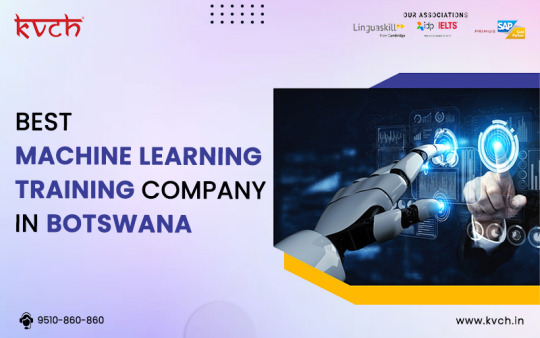
Machine learning certification| Best machine learning training
#best machine learning course#machine learning certification#Machine learning training#machine learning training in noida#machine learning course online
0 notes
Photo
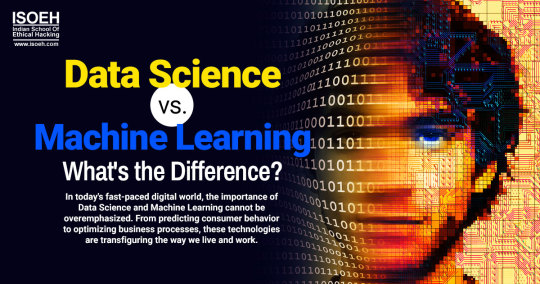
Innovative jobs, innovative career path offered by Data Science and Machine Learning that will take you to the awesome future. Learn from the ABC and reach to its focal point. Become a Hero!
#data science course#machine learning training#machine learning course#python for data science#data science certification#machine learning with python#machine learning certification#data science online course#learn machine learning#best machine learning course
0 notes
Text
The Self-Starter's Guide To Machine Learning

There is no single answer to this question as it largely depends on your level of expertise and experience with machine learning. However, a few widely accepted methods include attending online courses, reading books or articles, or participating in boot camps or other similar training programs.
1. Self-starters are independent and resourceful learners.
2. They are able to identify what they need to learn and are comfortable seeking out resources to help them learn it.
3. They are able to experiment and are not afraid of failure.
4. They are able to persevere when things get difficult and are willing to put in the extra effort to reach their goals.
There is no single answer to this question as it depends on what you want to learn and what your level of expertise is. However, there are some general tips that can help you get started with machine learning.
1. Pick a topic that you are interested in and want to learn more about. This can be anything from image recognition to natural language processing.
2. Find a dataset that you can use to train your machine learning model. This can be done by searching online or using public datasets from companies such as Google or Amazon.
3. Choose a machine learning algorithm that is appropriate for your problem. This will depend on the type of data you have and the nature of the problem you are trying to solve.
4. Train your model on the dataset and tune the parameters to get the best results.
5. Evaluate your model on a test set of data to see how well it performs.
6. If you are satisfied with the results, deploy your model in a production environment.
There are many ways to get started with machine learning, but one of the most popular ways is to use a self-starter kit. This approach allows you to get started quickly and easily without having to understand all of the underlying concepts. A self-starter kit typically includes a dataset, a few pre-processing steps, and some basic machine-learning algorithms. You can then use this kit to train your own models and make predictions on new data.
One of the advantages of using a self-starter kit is that it can help you get started quickly without having to invest a lot of time in learning the underlying concepts. However, one of the disadvantages is that you may not be able to get the same results as you would if you had invested the time to learn the concepts yourself. In addition, self-starter kits may not be able to provide you with the same level of customization and control as you would if you were to build your own machine-learning system from scratch.
Why Learn Machine Learning?
machine learning methods are a set of tools used to learn from data. They include both supervised and unsupervised learning methods. Supervised learning involves using a training set of data to learn a model that can be used to make predictions on new data. Unsupervised learning is used to find patterns in data without using a training set.
Self-stater ways of machine learning can be used for both regression and classification tasks. Regression is used to predict a continuous value, such as a price or a temperature. Classification is used to predict a discrete value, such as a label or a category.
There are many different self-stater ways of machine learning. Some of the most popular methods include support vector machines, linear regression, logistic regression, and decision trees.
This process is really easy. You get a data set, you train your machine learning algorithm on this data set, and then you evaluate it and tune it as needed.
There are 3 types of self-starter ways of machine learning.
1. Find a data set
2. Train your machine learning algorithm on the data set
3. Evaluate and tune your machine learning algorithm
Let's take a look at each of these in more detail.
# 1. Find a data set
There are many places you can find data sets for machine learning. Some popular places are the UCI Machine Learning Repository, Kaggle, and Amazon's AWS Public Datasets.
Once you've found a data set, it's important to understand what it contains. This includes understanding the features (variables) and the target (what you're trying to predict).
# 2. Train your machine learning algorithm on the data set
Once you have a data set, you'll need to train a machine learning algorithm on it. This
is a great approach when you need to develop a vision and start learning about a new topic/field.
A few things to keep in mind when choosing a self-starter approach to learning machine learning are:
1. Make sure you have a firm understanding of the basics. If you don't understand the basics of machine learning, you'll likely get frustrated and give up. There are plenty of resources available to help you learn the basics.
2. Start small. Don't try to tackle the entire field of machine learning at once. Start with a specific problem or task that you want to solve and work your way up from there.
3. Don't be afraid to ask for help. There are many people who are more than happy to help you learn machine learning. Seek out resources like online forums, online courses, and chat rooms.
#machine learning classroom training#machine laerning#machine learning guide 2022#best machine learning course
0 notes
Text
AI & Machine Learning Course

A curriculum established by E&ICT Academy, IIT Guwahati for future Data Scientists and Machine Learning Engineers. Learn in-demand skills including Statistical Thinking, Data Analysis & Visualization, AI & Machine Learning course, Python, Tensor Flow, Neural Networks & Deep Learning, Speech Recognition, IoT, as well as work on 10+ industrial projects and different tools.
0 notes
Text
oh, i am so enamored with the way the lesson of the velveteen rabbit rings true in our modern life. i love that we name our spaceships and write love poems to old buildings. i love that we all cried about the mars rover, that we made her so real that she was no longer a machine but a friend, a companion, a hero.
i love that we become attached to certain mugs, spoons, mason jars. that we develop a strange protective love-hate of our tablets, that we feel weirdly reverent about our new notebook. we name our cars silly things like the crab shack and call our favorite whisk attachment the one great destroyer.
there's a dog statue at my local park that has a golden back and golden head from how often people have pet it. at my college campus, people love an ugly little pointless sculpture we call bacon pants or bacon legs. we assign personalities to fountains, parks, laptops.
i love that our basic instinct is to include others in our community, even where there isn't a real community to speak of. that we love things, even when they cannot physically love us back - for us, the exchange isn't what's important. we give our heart to things so entirely that the thing begins to, in its own way, have its own heart.
the last transmission from the mars rover was not words; it was data. nevertheless, someone translated for her. my battery is low and it's getting dark. they made her last words a poem. they looked at data and saw a soul, a divine spark.
i keep thinking about the first AI born truly free-thinking. i keep thinking about the way scientists and artists talk about their work. how their eyes light up and their hands start moving, how even when they're flat broke and confused and the coding isn't working - there's this love of the thing. i keep thinking that whatever is being born into this new world will be born here on purpose, over a long time, with great energy. that when it arrives, the first thing it will know is most likely the hands of a creator delighted, overcome.
that we made it in our image. that the image we wrote was one of human compassion within ingenuity. that we couldn't make this thing without it being a labor of real-and-true: love.
#okay yes we can have a marxist conversation about how it's dangerous to make the commodity#into a token of love or affection#or how the first truly free-thinking AI will likely be the result of a megacorporation and therefore not have#like the BEST humans behind it#but let me for a minute believe -#even the stoic among us have worked on something#for long hard hours#and in that working#didnt you kind of learn to love it? at least a little if not completely?#and when it was over - it was YOURS#and it having been the result of your blood sweat tears unpaid hours and no leave#still; you know - you MADE something#and that changes how u see it#bc a part of u will have to live in it#..... and from that.... how can we see ourselves#and not love? and not care?#it will come into a world where its god-creator will HAVE to be there#and that moment ....... won't it of course be one of joy? how could it not be?#both machine & man in that moment making a strange and new discovery
3K notes
·
View notes
Text
Efficient content strategy with ChatGPT
Growing a monetizable audience is HARD.
But it doesn't need to be so time-consuming.
Here's how to make ChatGPT create an incredibly efficient content strategy for you:
📈 Growth content (to get eyeballs)
This is the content that goes viral all the time.
It contains basic information, but that’s why it works so well:
Because it’s beginner-friendly content that's applicable to everyone & promises a “quick fix.”
🧠 Knowledge content (to get fans)
This content educates your audience on specifics.
It teaches your readers 1 of 2 things:
How to get something they desire
How to avoid something they don’t like
When you you solve people’s problems, they start liking you.
💪 Authority content (to get rizz)
This makes your audience trust your expertise.
Because even if someone knows & likes you, they won’t buy from you unless they trust in your ability to help them.
You do this by sharing:
Testimonials
Achievements
Social proof
Copy-paste the prompt below into ChatGPT
Insert 3+ topics you write about
Press enter & watch ChatGPT spit out an amazingly relevant strategy!
Prompt:
I want you to create a Content Strategy for me.
A Content Strategy is a document that describes a brand’s social media strategy so it know what to create content around - and what not.
It’s like a North Star for the brand’s content: it’s specific enough to serve as a guiding and reassuring document, but vague enough to leave some room for intepretation.
The brand I want you to create a Content Strategy for is [GIVE CONTEXT],
To create a content strategy, I want you to imagine a Content Strategy Matrix with an x and y axis.
On the x axis, you have the 3 proven content types:
1 Growth content - to get eyeballs
This is the type of content that goes viral on social media all the time.
It’s contains relatively basic information, doesn’t provide any unique value, but that’s precisely why it works so well:
It’s beginner-friendly content that promises a “quick fix”.
2 Knowledge content - to get fans
Knowledge content educates your audience on something specific.
This actionable and informational content teaches your reader one of 2 things:
a) How to get something they really desire
b) How to avoid something they really don’t like
This content works because when you you solve people’s problems, they start liking you.
3 Authority content - to get rizz
Authority content makes your audience trust your expertise.
Because even if someone knows & likes you, they won’t buy from you unless they trust in your ability to help them.
Common ways to do this are:
Sharing testimonials
Sharing achievements
Sharing other social proof
Sharing extremely-specific knowledge content
on the y axis, you have my 3 content buckets, the things I talk about:
1 [TOPIC 1]
2 [TOPIC 2]
3 [TOPIC 3]
—
Now, I want you to create a Content Strategy by filling out the matrix.
Fill out the matrix by applying each of the 3 proven content formats from the x axis to the 3 content buckets on the y axis.
The output should be formatted in a table, so that each resulting matrix field has a bolded headline describing it, with 2 sentences below explaining the component of the content strategy.
😇 If you want to get more prompts, go to
https://godofprompt.ai
and supercharge your efficiency with ChatGPT 🔥
#chatgpttips #chatgptprompt #chatgpttips #GodMode #ChatGPTChallenge #promptengineering #bestprompts #aitools #aitoolsforbusiness #aitoolsformarketers #aitoolsforsocialmedia #godofprompt
#godofprompt.ai#chatgpt#godofprompt#chatgpt course#content strategy#business#grow your business#ai tools for digital marketing#ai tools 2023#best chatgpt prompts#free ai tools#ai technology#machine learning#prompts for copywriting#prompts for seo#Prompts for social media#social media marketing#social media tips
2 notes
·
View notes
Text
Best Artificial Intelligence Course and Its Challenges
Artificial Intelligence Course
The term Artificial Intelligence has been conquering the headlines; especially in the past five years. Artificial Intelligence or AI can be defined as the prompt of natural intelligence in machines as reactions to certain words, sounds and/or events. That is, machines are programmed to learn and mimic the actions of humans in response to specific events. For example, a machine or even a system can be instructed to wish “Good Morning” when the clock strikes 6:00 am. Then the machine learns that whenever there is light you wish “Good Morning” and when it is dark, you wish “Good Night. Though this is not the perfect replica; it gives an idea on how Artificial intelligence works.

IMPACT OF AI ON INDUSTRIES AND WORKSPACES
This post gives an overview of how AI has impacted working styles in different industries as well as on various enterprises. Certain interesting insights along with forecasts shared by leading research organizations across the globe are:
Utilizing AI in marketing and sales enabled multiple organizations to increase their leads by 50%+. Along with this, they were able to reduce their call time by nearly 70%. Cost reductions came nearly a massive 60%.
AI is predicted to evolve as a $190 billion industry by 2025.
The World Economic Forum’s report predicted that estimated that AI probably could create 97 million new jobs by 2025.
These are just some of the many striking features. Use of Artificial Intelligence has become a major necessity for enterprises across verticals and also in the daily lives of common man. For instance, Gmail makes use of an advanced AI system that helps in detecting and filtering spam mails. Also, popular social networking sites utilize AI to detect & delete fake news. Other instances include instances where businesses use AI-powered chat-bots for better customer support.
This example would perhaps ring a bell. “Do you own a smart-phone? Is there a facial lock/unlock feature in it? That is, can you lock/unlock your phone by scanning the contours of your face?”
That’s AI for you! Also, when you speak of AI- exploration must also be done on two core branches. These are Augmented Reality (AR) and Virtual Reality (VR).
Augmented reality (AR) can be defined as combining replicas of digital elements in a real-time environment. That is, imagine bringing objects, people and scenarios from your mobile phone or television to the reality in front of you? Imagine if you could actually be at the side of super heroes such as Spider Man when he fights the imaginary character, Dr. Octopus? Say hello to Augmented Reality.
Virtual Reality is very similar. But the core difference is that you do not add graphics or digital media intro reality; you actually go into them. Let us put that in simpler words. “Imagine you could enter the very scene where the fight between Spider Man and Octopus? That is, you were not just watching; you were part of the fight!” That is Virtual Reality in the simplest words.
Augmented Reality (AR) and Virtual Reality (VR) are two developing areas of technology whose full potential are yet to be expanded into mainstream industries. Combining together VR and AI can provide us with some pretty incredible opportunities. There is a lot of potential on the career front, innovation, research, and even commercial growth. However, we still have a long way to go in nurturing the complete potential of AI. There are quite a few roadblocks and challenges.
CHALLENGES
Jobs - The rising demand for AI has simply resulted in the generation of new career opportunities in the areas of Machine Learning, Data Science, Deep Learning, and more. However, the AI industry is facing server shortage of skilled and certified professionals who can handle these challenging job-roles. That is, there is high demand but not enough supply. AI is the future but normal students, professionals and even entrepreneurs in India are not completely prepared to welcome it.
Responsibility - The major interesting aspect about AI & ML algorithms is that they tend to learn and evolve by themselves on how to react to events. Also, reactions of algorithms are unpredictable. To make it short, developers and/or owners of these machines cannot always control what reaction they wish to generate. Hence, this requires complete expertise in AI with a proper understanding of how it works.
Privacy - To make AI powered systems to function in a precise manner, enterprises would be feeding the systems with large volumes of customer data. This may lead to several privacy concerns that need to be addressed.
SUMMARY
This was an educational post which gave you a glance into the world of AI, some of its benefits and some of its challenges. Did you find it useful? We would love to hear more from you. SchoolforAI is a modern hybrid learning platform that shares knowledge to students and similar audiences on the different aspects of AI along with data science. We have multiple customized courses to make you subject matter experts. Follow our page for more.
2 notes
·
View notes
Text
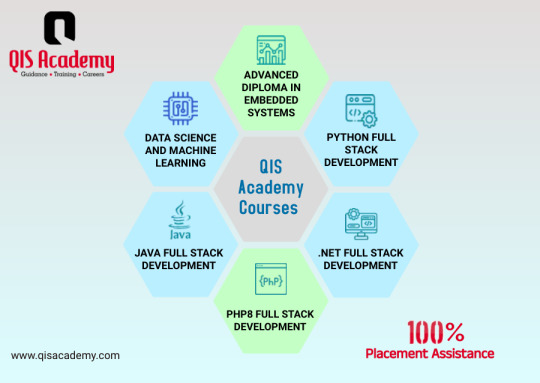
Become a .NET Full Stack Developer in Kochi | Quest Innovative Solutions https://www.qisacademy.com/
#Data Science Course in Kochi#Best Machine Learning Training in Kochi#Best Data Science Course in Kochi#Data Science Course Training Institute in Kochi
0 notes
Text
Best Machine Learning Course In zirakpur at CADL
0 notes
Text
"Python Data Types and Variables: The Foundation of Dynamic Programming"
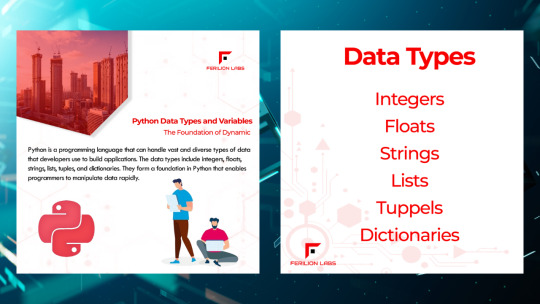
Introduction:
Python is a programming language that can handle vast and diverse types of data that developers use to build applications. The data types include integers, floats, strings, lists, tuples, and dictionaries. They form a foundation in Python that enables programmers to manipulate data rapidly. In this article, we explore each data type's definition, explore their significant applications, and learn about Python's variable assignment and manipulation flexibility.
Exploring the Data Types:
1. Integers:
Integers are data types that represent whole numbers. They have no decimal points or fractions. In Python, programmers can perform mathematical operations such as addition, subtraction, multiplication, and division with integers. The concept is valuable for mathematical calculations, financial computations, and counting. Additionally, Integers can handle large numbers with a range from -2^31 to 2^31-1.
2. Floats:
Floats are floating-point numbers that represent decimal numbers or exponentials. In Python, floats are useful for scientific calculations and financial computations. They can handle a wide range of decimal values, including very large or small numbers, and perform incredibly accurate calculations. Programmers can perform standard mathematical operations, such as addition, subtraction, multiplication, and division, on float data types.
3. Strings :
Strings are sequences of zero or more characters combined. These elements are specific references or text in Python inside single quotes, double quotes, or triple quotes depending on the string length. Strings are useful in applications like textual data manipulation, user interface input, or generating dynamic content. Programmers can use built-in Python functions and methods that can manipulate string functions, such as concatenation, searching, slicing, and formatting.
4. Lists:
Lists are collections of items that Python stores in order, following the concept of heterogeneity. Programmers can include data types, data sets, and arrays in lists. They can append, modify, or extend lists as needed. Programmers use lists in applications like sorting algorithms, searching, grouping related items, and iterating over specific elements.
5. Tuples:
Tuples in Python are similar to lists but with one main difference. Each data type is immutable or unchangeable once defined, thus creating order and organization in the data application. Programmers use tuple data types in scenarios where data integrity is essential or acting as keys in dictionaries.
6. Dictionaries:
Python stores dictionaries in key-value pairs enclosed within curly braces ({}). Each value in the dictionary has a specific unique key, making it easy and fast to retrieve data. Programmers use dictionaries in applications like mapping different values, configuration settings, or datasets.
Variable Assignment and Manipulation:
Python has flexible variable assignment using the equal (=) sign. Programmers can assign variables that hold different data types, making it easy to reference data and conduct operations specific to that variable. Programmers can manipulate variables and perform complex calculations, transform data, or manipulate strings using appropriate Python operations.
Conclusion:
Python is a versatile programming language with advanced data types and easy variable manipulation. The data types, such as integers, floats, strings, lists, tuples, and dictionaries, are the foundation of dynamic programming in Python applications. Programmers use these concepts to handle different types of data, perform calculations, manipulate strings, manage collections, or create mappings between different values. With the foundation of these concepts, developers can build efficient and innovative programs in Python that can handle various applications.
LEARN MORE ABOUT US
#software development classes#software development courses#courses software engineering#software course#software engineer classes#software training institute#program developer course#best software courses#artificial intelligence#course on software engineering#Python#python#python programming#python and programming#python the programming language#python course#python language course#python for coding#python training#python web development#python developer#python learning#learn python programming#python software#python machine learning
0 notes
Text
How to Install Kali Linux in VMware in Just 4 Simple Steps (Easiest Way)
In this guide, you will be able to learn the easiest way of how to install Kali Linux on VMware in Just 4 Simple Steps, I hope this helps a lot!
To keep in mind: Obtaining unauthorized access to another’s computer system or systems is illegal under the Computer Fraud & Abuse Act.
Here you will find a step by step guide on how to install Kali Linux onto VMware. The main purpose of this blog tutorial is to educate others on cyber security tools, technologies, and techniques with the intention of creating consciousness for others on better…

View On WordPress
#best cybersecurity tools#Cybersecurity#cybersecurity course#cybersecurity jobs#ethical hacking#How to#how to code#how to install#how to install kali linux#how to install vmware#how to learn cybersecurity#how to learn linux#how to use a virtual machine#Kali Linux#linux#linux jobs#virtual machine#VMware
0 notes
Text
Embracing the Data Revolution: Why You Should Take a Data Science Course
In today's data-driven world, the ability to extract insights from massive amounts of data is a crucial skill that can lead to exciting job prospects. Enter data science, an interdisciplinary field that uses statistics, mathematics, programming, and domain knowledge to analyze large datasets and reveal useful patterns. If you're on the fence about taking a data science course, keep reading to find out why it could change your life.
Unleashing the Power of Data
Data is ubiquitous, ranging from social media interactions and internet transactions to sensor readings and medical records. However, raw data has little value unless it is converted into meaningful insights. Here's where data science comes in. Data scientists can sift through massive databases using techniques such as data mining, machine learning, and predictive analytics to detect trends, anticipate outcomes, and drive informed decision-making.
Thriving in the Digital Age
In an era of exponential data development, organizations across industries are increasingly relying on data scientists for a competitive advantage. Data science applications are nearly unlimited, from optimizing marketing campaigns to improving healthcare outcomes and cybersecurity measures. Enrolling in a data science course will provide you with the necessary abilities to solve real-world difficulties and make a tangible contribution in your chosen area.
Building a Versatile Skill Set:
One of the most appealing reasons to take a data science course is its adaptability. Data science covers a wide range of disciplines, including statistical analysis, data visualization, machine learning, and big data technology. As a result, students develop a diverse skill set that employers in a variety of industries value. Whether you're interested in banking, healthcare, or technology, data science skills can lead to a variety of job options.
Harnessing the Power of Machine Learning:
Machine learning is a subset of artificial intelligence that allows computers to learn from data and make predictions without being explicitly programmed. Machine learning is revolutionizing sectors and changing the way we live and work, with applications ranging from recommendation systems and natural language processing to picture identification and driverless vehicles. Enrolling in a data science course will give you hands-on exposure with machine learning algorithms and tools, preparing you to drive innovation and impact the future.
Preparing for the jobs of tomorrow:
With the demand for data scientists increasing, now is an excellent moment to invest in your future by enrolling in a data science program. Whether you're a new graduate looking to start your career or a seasoned professional looking to advance, a data science course will give you the information, resources, and support you need. These courses, which include industry-relevant curriculum and practical, project-based learning experiences, are intended to prepare you for careers of the future and beyond.
Conclusion:
In conclusion, enrolling in a data science course is a decision that can propel your career to new heights in the digital age. By mastering the tools and techniques of data analysis, you'll gain the skills needed to thrive in a variety of industries and make a meaningful impact in your chosen field. So why wait? Embrace the data revolution and embark on your journey into the exciting world of data science today. Your future self will thank you for it.
Join CACMS for a complete data science course in Amritsar. Experience hands-on practical instruction at our prestigious Authorized instruction Institute. Equip yourself with in-demand skills to succeed in the data-driven age. Please contact us at +91 8288040281 or visit the link below for further information. Don't pass up this chance to begin your career in data science. Enroll today!
#cacms institute#cacms#techskills#techeducation#study abroad program#learn data science#data science training course#data science certification#data science course#data science#data analytics#professional certification#machine learning#best computer institute near me#best computer instiute in amritsar
0 notes
Text
What is machine learning and how does it work?
Unlock the mysteries behind the technological marvel – discover "What is machine learning and how does it work?" in this comprehensive guide. Explore the intricacies of machine learning algorithms, their applications, and the underlying principles that power this transformative technology. Unravel the magic behind smart systems that learn and adapt without explicit programming.
Click here- https://medium.com/@yusufkhan.kvch/what-is-machine-learning-and-how-does-it-work-5ba8b1aa214f
#MachineLearning
#TechExplained
#HowMachineLearningWorks
#MLAlgorithms
#TechMagic
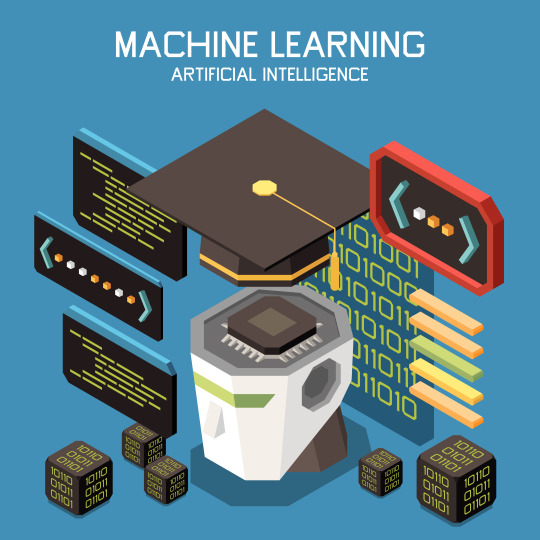
#Machine Learning Training Institute in Delhi#Machine Learning Course in Delhi#Best Machine Learning Training in Noida
0 notes